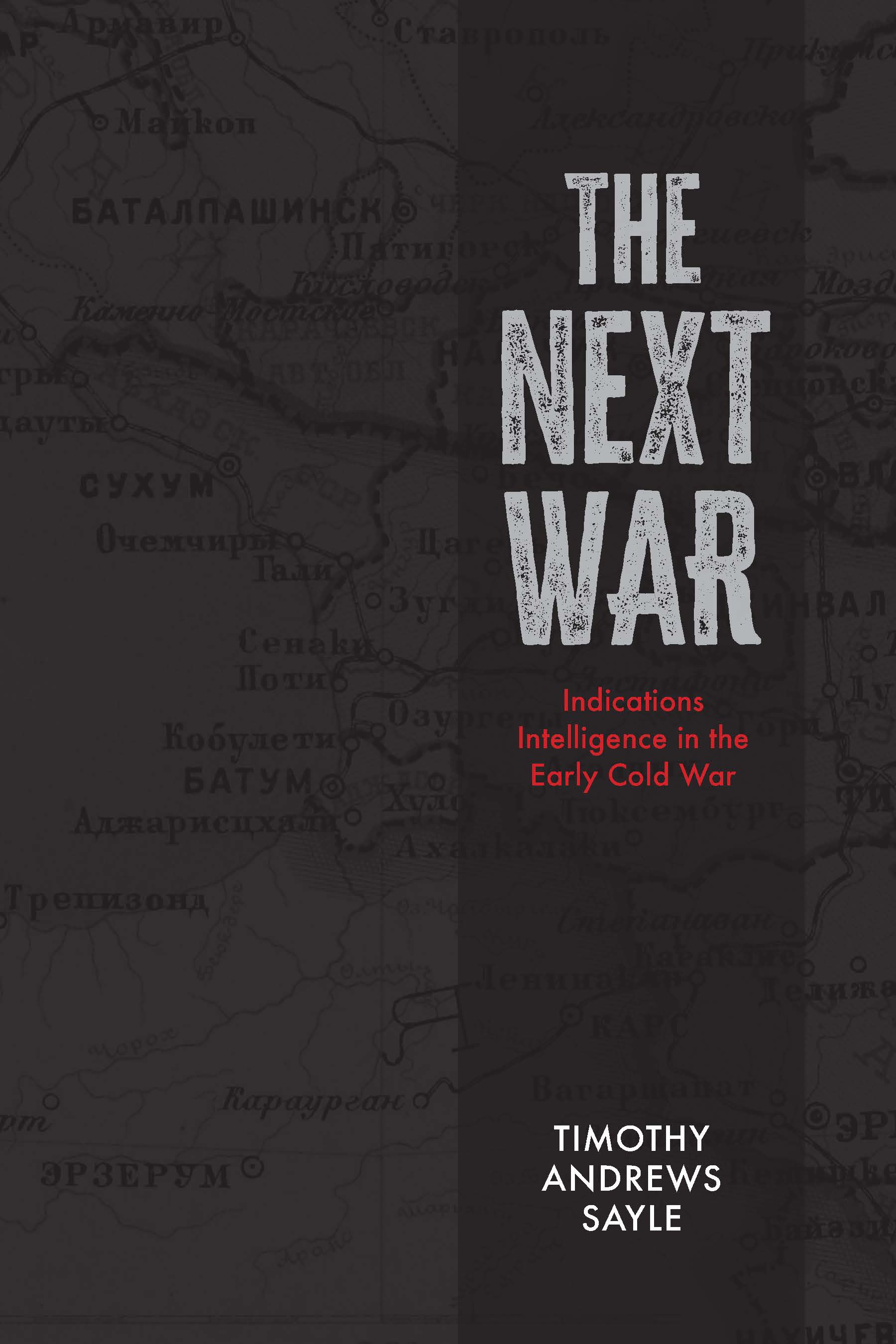
The Next War: Indications Intelligence in the Early Cold War
Timothy Andrews Sayle
$72.99 HC / $38.99 (S)
256 pages
6 x 9 inches
Hardback: 978-1-77385-622-3
Paperback: 978-1-77385-623-0
Epub: 978-1-77385-625-4
Library PDF: 978-1-77385-624-7
July 2025
The Next War draws on recently declassified documents to reveal the hidden history of allied intelligence networks during the early Cold War.
The threat of nuclear conflict loomed menacingly over the world during the Cold War. Early warning of an attack was a crucial focus for military and political intelligence. Intelligence networks in Canada, the United States, and the United Kingdom came together, forming a tripartite intelligence relationship dedicated to indications that the Cold War would turn hot.
The Next War is the first full account of the development of the allied indications network. Timothy Andrews Sayle dives deeply into recently declassified documents to explore this previously hidden history. He traces the decisions and choices made by intelligence organizations in Canada, the United States, and the United Kingdom to coordinate their assessments despite different, sometimes conflicting, national agendas, ideological positions, and levels of trust.
From early appreciations of the possibility of war with the Soviet Union to a formal agreement and communications network designed to link the intelligence establishments of Ottawa, London, and Washington, the tripartite intelligence relationship of the allied indications network established the basis for the close cooperation that continues to this day.
The Next War widens our understanding of Cold War intelligence history through exemplary scholarship and extensive foraging within the documentary record. With its descriptions of the evolution of national indications intelligence structures and the diplomacy and debates between allied capitals this book explains Canada’s prominent role alongside its intelligence partners.
About the Author
Timothy Andrews Sayle is associate professor of History at the University of Toronto and a senior fellow of the Bill Graham Centre for Contemporary International History. He has published widely in the field of international history, including books, edited collections and articles on NATO, Canadian external affairs, nuclear history and the history of intelligence.
Introduction: The War of 196?
Indications of the Third World War
The Last War
Section 1: Imminence of War
Chapter 1: A Third World War in the Making?
Partner or Prophylactic?
World War Three?
Toward a Shared Appreciation
The Cold War Begins
First Try
The Importance of Combined Intelligence
US-Canadian Differences
US-Canadian Agreement
JIC 1 (Final)
An American Attack?
Conclusion
Chapter 2: Agreed Intelligence
The Threat to North America
War Planning
ACAI (American-Canadian Agreed Intelligence)
Towards ABC Intelligence
The First and Last ABCI Conference
ABCI 15
Part I of ABCI 15
Putting ABCI Part 1 to Use
Aftermath
Soviet Intentions
A Fresh Start
Chapter 3: The Most Important Question
The Greatest Danger
The Meaning of Korea
Now or Later
The Politics of Danger
The Canadian View from Abroad
The End of Imminence
From “Imminence” to “Risks”
The Likelihood of War
Comparison with the US & UK
Evidence
The World Turns
Section 2: Indications of War
Chapter 4: The Origins of Indications Intelligence
US Origins, 1948-1950
United Kingdom and Canada (1950-53)
A Model for Americans and Canadians (1953-54)
Chapter 5: The Tripartite Intelligence Alerts Agreement
Injecting Words of Caution
A Canadian Indications Room
Waiting for an American Response
Bilaterals and Trilaterals
Building an Indications Room in Ottawa
Agreement
Chapter 6: The Alerts Agreement in Action
Communications Issues
How to and When to Invoke the Agreement
Building a Canadian Indications Room, Part 2
The Canadians Want to Go Global
Setting the Indicator List
The Crisis of 1958
The First ALE Message
The Berlin Crises, and the Broken Cables
The Canadian Indications Procedure
The Cuban Missile Crisis
Conclusion: A Semi-Dormant but Continuing Agreement
Bibliography
Acknowledgements
End Notes
Index
In The Next War Timothy Andrews Sayle tells a fascinating and important history about how Canadian officials grappled with one of the central questions of the Cold War: was war about to break out? The end result is a fresh and engaging look at Canada’s Cold War and the role of intelligence.
—Susan Colbourn, Duke University
Drawing on a vast array for newly declassified records, Tim Sayle has produced a fascinating, richly detailed look at a critical part of Canada’s intelligence history, namely the effort to predict a third world war.
—Asa McKercher, St. Francis Xavier University